
Ricciardi Lab
Gen d'Avignon
The fate of microplastics in a fluvial food web
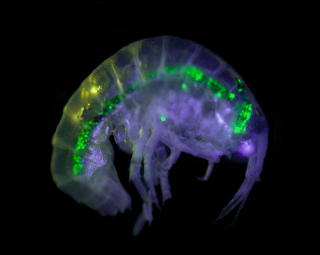 In the past several years, microplastics (polymer particles < 5mm) have been discovered in virtually all ecosystems of the world. This pervasiveness has alarmed the scientific community because of the potential toxicity of the plastic itself as well as the toxic contaminants and heavy metals that are easily adsorbed onto their surfaces. It is increasingly evident that animals of all sizes can ingest microplastics and thus be exposed to the contaminants carried by these particles.
In the past several years, microplastics (polymer particles < 5mm) have been discovered in virtually all ecosystems of the world. This pervasiveness has alarmed the scientific community because of the potential toxicity of the plastic itself as well as the toxic contaminants and heavy metals that are easily adsorbed onto their surfaces. It is increasingly evident that animals of all sizes can ingest microplastics and thus be exposed to the contaminants carried by these particles.
Recent studies show that microplastics occur in high densities across the Great Lakes-St. Lawrence River system, making their insertion into food chains highly probable. Considering the reliance of Canadians on the world’s largest freshwater ecosystem for recreation, industrial practices, fishing, navigation and potable water supplies, the issue of plastic contamination is of societal importance. Although Canada and several other countries have banned the use of microplastic beads in cosmetic products, most plastic particles found in aquatic environments are in other forms and originate from other sources, and therefore are not targeted by this legislation.
My research is designed to evaluate the ecological risks associated with microplastic contamination of the Great Lakes-St. Lawrence River system by generating detailed knowledge of their pathway of entry and fate in food webs, and their impacts on aquatic organisms, communities and ecosystems.
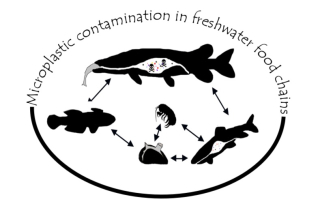
Image: Gen D'Avignon
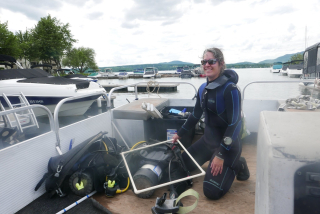
|
I consider myself an interdisciplinary and applied ecologist as I have skills and interests in multiple fields (ecosystem services, food sovereignty, apiculture, education, international development). I have mingled with lake, river and marine ecology both at work and through academic endeavors. I am interested in finding solutions to reduce the impacts of humans on aquatic ecosystems whether it be pollution, climate change, or over-consumption of resources. I am always happy to be in and around water and wish that future generations have the same opportunities I have to enjoy clean waters and keep exploring the subaquatic world.
|
Jessamine Trueman
Influence of temperature on the performance and impact of invasive goldfishes (Carassius spp.)
In recent decades, the rate at which new species are introduced around the globe has been accelerating. Freshwater ecosystems are particularly susceptible to invasions because they are major centres of human activity, and as a result there are more opportunities for invasive species to be introduced and establish. The Great Lakes- St Lawrence basin in North America experiences the highest recorded invasion rate of all freshwater ecosystems in the world, with a new invasive species being discovered on average every 28 weeks. With an ever-growing list of invasive species in the Great Lakes it is impossible to manage every species, or prevent every new threat. However, not all invasive species are equivalent in their impact on the ecosystems they invade. It is important to conduct risk assessments to identify which species are likely to have the largest impact and prioritize their management.
Unfortunately, the conditions that a species experiences can determine how much of an impact they will have, and the conditions in the Great Lakes are rapidly changing right now due to climate change. The increasing water temperatures in the Great Lakes may create conditions that are more amenable to invasive species that originate from warmer climates.
My research examines how climate change in the Great Lakes is expected to alter the performance and impact of two invasive goldfish species: goldfish (Carassius auratus) and Prussian carp (Carasssius gibelio). The results of this research will be used to update risk assessment and management plans.


 |
I earned my BSc in Biology at Concordia University. As an undergraduate I worked on an Atlantic salmon restoration program in the tributaries of Lake Champlain. As an assistant on this research project, I helped investigate how the removal of a dam affected Atlantic salmon spawning habitat and I worked on a project looking at early mortality syndrome in young-of-the-year salmon. It was through this work that I learned invasive species in Lake Champlain were a key factor impeding the reproductive success of the salmon, and became interested in how to prevent the spread of invasive species and manage established invasive species. At that point, it only seemed natural to pursue an MSc in the Ricciardi lab! In my spare time, I enjoy hiking and camping all around North America and learning about lesser known chapters of history.
|
Christophe Benjamin
Impact of European Tench on native benthivorous fishes
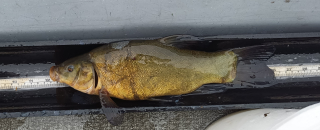 Tench, a globally invasive freshwater cyprinid, has been introduced in the Richelieu River some 30 years ago. Since then, it has spread all over the St. Lawrence River and is now found in eastern Ontario. Tench is infamous for its tremendous environmental tolerance, and its multiple negative impacts on aquatic ecosystems. In recent years, its rapid range expansion has brought Tench to the attention of Great Lakes authorities and stakeholders.
Tench, a globally invasive freshwater cyprinid, has been introduced in the Richelieu River some 30 years ago. Since then, it has spread all over the St. Lawrence River and is now found in eastern Ontario. Tench is infamous for its tremendous environmental tolerance, and its multiple negative impacts on aquatic ecosystems. In recent years, its rapid range expansion has brought Tench to the attention of Great Lakes authorities and stakeholders.
I am particularly interested in the competitive impact of Tench on Catostomids, an ecologically important group of fish which include species-at-risk. To test this, my main project is comparing growth rates of both native species and invasive tench in conspecific and interspecific treatments in large mesocosms. I am also working in collaboration with other researchers on tench capture efficiency and prediction of tench establishment success based on historical data projects.
Image by Christophe Benjamin
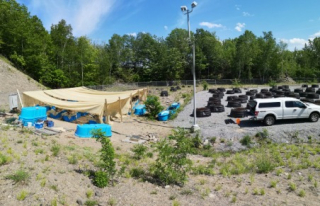
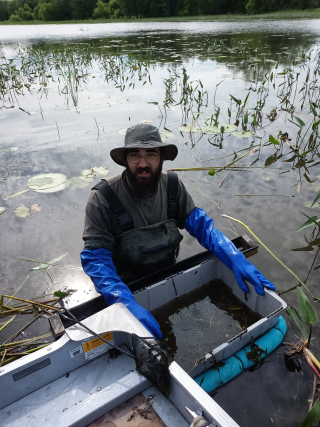 |
My fascination with aquatic environments comes from the mystery surrounding everything beneath the water. My studies and most of my hobbies are aimed at unveiling a little bit of this mystery. I am a man of applied ecology, so understanding and preserving freshwater ecosystems is the main force driving my research interests.
|
